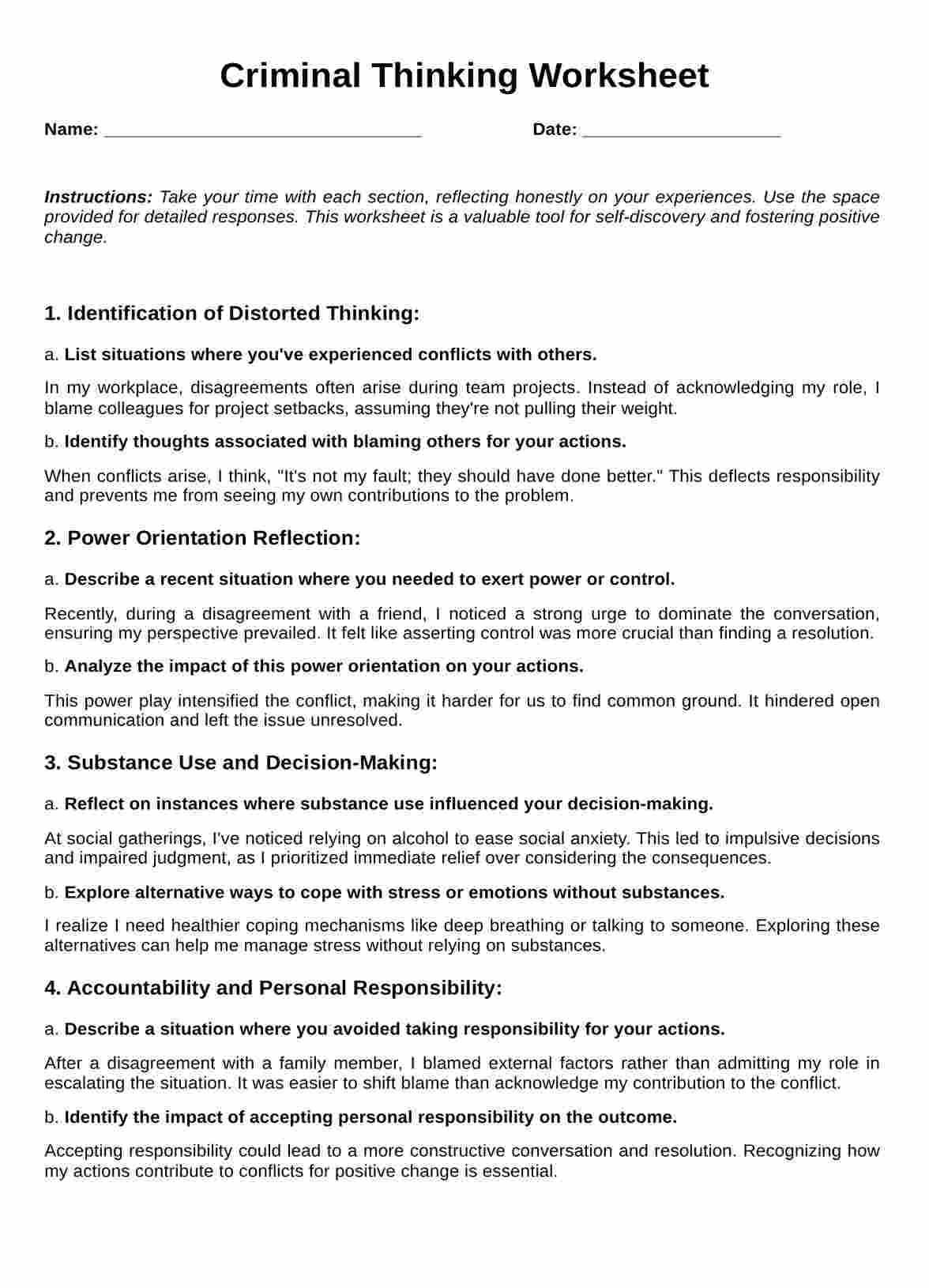The worksheet aids in treating addiction by targeting cognitive distortions linked to addictive behaviors. Through structured exercises, clients explore real-life experiences, promoting self-awareness and behavior change crucial for overcoming addiction.

Criminal Thinking Worksheet PDF
Enhance healthcare outcomes with our Criminal Thinking Worksheet, addressing cognitive distortions for effective treatment planning.
Use Template
Criminal Thinking Worksheet PDF Template
Commonly asked questions
Yes, the worksheet is designed to be adaptable and inclusive. Therapists can customize it based on individual needs, ensuring its relevance across diverse clients and treatment plans.
The worksheet serves as a tangible extension of therapy sessions. It reinforces lessons learned in therapy, offering clients a structured means to apply insights gained during sessions to their daily lives.
EHR and practice management software
Get started for free
*No credit card required
Free
$0/usd
Unlimited clients
Telehealth
1GB of storage
Client portal text
Automated billing and online payments











